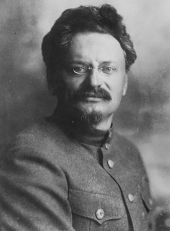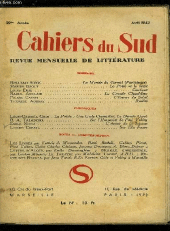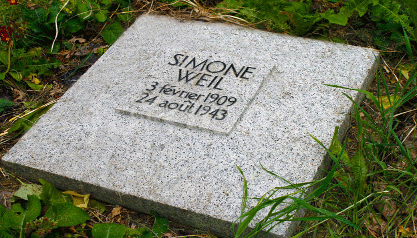Simone Weil Timeline
Ronald KL CollinsThe total span of Simone Weil’s life: 12,620 days.
Much of the timeline is excerpted from David McLellan’s Utopian Pessimist: The Life and Thought of Simone Weil and was supplemented by dates and facts contained in, among other places, the chronologies appearing in J.P. Little’s Simone Weil: Waiting on Truth and Robert Coles’ Simone Weil: A Modern Pilgrimage. A complete bibliography along with additional resources is located at the end of the timeline.
1872
Birth of Simone’s father, Bernard Weil (1872-1955), at Strasbourg, France
1879
Birth of Simone’s mother (1879-1965), Selma Reinherz, at Rostov, Russia
1905
Marriage of Simone’s parents
1906
Birth of André Weil (1906-1998)
1909
Birth of Simone Weil, February 3rd at 19 Blvd. de Strasbourg, Paris
1913
Weil family moves to 37 Blvd., Saint-Michel
1914
August:Weil family moves to Neufchâteau / Outbreak of World War I
1915
April: Weil family moves to Mayenne
1916
Weil family takes on a young cousin whose mother had just died.
February: Selma and children return to Paris. Simone attends Lycée Montaigne for three months
1917
January: Weil family moves to Chartres
September: Weil family moves to Laval; Simone attends Lycée
1918
November: End of World War I
1919
January: Weil family returns to Paris
October: Simone starts at Lycée Fénelon
November: Russian Revolution
1920
Congrès de Tours: birth of French Communist Party
1922
Mussolini’s march on Rome
1924
July: Simone passes first part of baccaluréat
October: Attends Lycée Victor-Duruy
1925
October: Enters Lycée Henri IV / pupil of Alain (Émile-Auguste Chartier)
1928
Participated in workers’ education and syndicalist activities
October: Passes entrance exam, in first place, and then enters Ecole Normale Supérieure.
1929
Simone’s grandmother dies of cancer.
May: Weil family moves to 3 rue Auguste Comte / Leon Trotsky forced into exile
September: The Wall Street crash
1930
Simone’s headaches begin / Revolt of Annamites, Yen Bay, Tongking
July: Defends thesis on “Science and Perception in Descartes”
1931
Simone writes articles for Libres Propos (edited by Alain), L’Effort.
July: Passes agrégation
October: Starts teaching at girl’s school in Le Puy-en-Vélay / efforts of French trade union movement to reunite
December – January: Involved in worker unrest in Le Puy and is arrested and then released
1932
Active in demonstrations for unemployed workers, writes numerous short articles for trade union journals
August: spends six weeks in Berlin
October: Transferred to girls’ lycée at Auxerre, writes “Germany Waits” and “The Situation in Germany”
November: Simone’s first contact with Boris Souvarine

1933
January: Hitler becomes chancellor of Germany.
August: Holiday in Spain / writes “Are We Heading for a Proletarian Revolution?”
October: Begins teaching at Roanne
December: Meets Leon Trotsky at parents’ home in Paris / march of Saint-Etienne miners
1934
February: Stavisky riots in Paris
March: Convalesces from a throat abscess that weakened her.
March: Publishes “A Proletarian Uprising in Florence” in La Critique Sociale
June: Begins work as a machinist at Renault factory
August: Ends work at Renault factory towards end of the month.
Autumn: Finishes “Reflections Concerning the Causes of Liberty and Social Oppression” essay
December: Begins work at Elektro-Firm Alsthom factory as drill-press operator
1935
February: Simone convalesces in Crans-Montana, Switzerland
April–May: works at J.J. Carnaud et Forges de Basse Indre factory in Boulogne-Billancourt as a packer
August-September: Holiday in Spain and Portugal / overwhelmed by the songs sung by Portuguese women: “First contact with Christianity that really counted”
October: Begins teaching at Bourges / Italy invades Abyssinia
December: While in Paris joins students to see Chaplin’s Modern Times.
1936
January: Meets Monsieur Bernard to discuss conditions at Rosières factory
March: Hitler re-militarizes Rhineland
May: Writes “An Appeal to the Workers at Rosières” for factory magazine (Entre Nous) — rejected as too provocative. Thereafter writes an essay on Antigone for factory magazine — accepted / Victory of Popular Front in France
June: Nationwide workers’ strike
July: Beginning of Spanish Civil War
August: In Barcelona
August-September: Joins Durruti’s Anarcho-Syndicalist column on Republican side in Spanish civil war, accidentally steps into cooking pot of boiling oil, leaves the Front and treated in Sitgès / beginning of Moscow show trials / Returns to Paris to convalesce.
1937
Publishes “A Note On Social Democracy”
January-February: On sick leave, contacts René Belin and Emmanuel Mounier. Writes “Let us not Begin the Trojan War Again!”(aka “The Power of Words”)
March: Stays in Crans-Montana, Switzerland, for treatment in a clinic re her foot injury — meets Jean Posternak
April: Publishes “Let’s not Start Another Trojan War” (aka “The Power of Words”) for the magazine Nouveaux Cahiers
April-June: Travels in Italy, spiritual experience in Assisi
June: Fall of Léon Blum government
September: Writes “The Workers Condition”
October: Begins teaching as professor of philosophy, Saint-Quentin — Contacts Nouveaux Cahiers study group (founded by Auguste Detoeuf) and later joins the editorial staff
1938
Reads T.E. Lawrence’s Seven Pillars of Wisdom (1926) and collection of Lawrence’s letters published in 1938. Also reads or rereads: the Old Testament, Saint-Réals’s Conspiracy of the Spaniards Against the Republic of Venice, the Egyptian Book of the Dead, Richelieu’s Memoirs, the Story of Charles VI (anonymous monk), and various ancient historians: Herodotus, Thucydides, Polybius, Plutarch, Diodorus of Sicily, Titus Livy, Tacitus, among others.
March: Anschluss in Austria
Late-March: Attends Easter services at Benedictine abbey of Solesmes, where “the Passion of Christ entered my being once and for all”
May-late-July: In Italy
Late July-Early August: In Switzerland
Middle-August: Arrives in Paris with parents
September: Munich agreement / Britain & France declare war on Germany / returns to Paris
Late-November: participates in a debate on Jewish immigration to Palestine
1939
February: Her brother André arrested in La Havre on a charge of desertion then transferred to Rouen for two months in prison while awaiting trial
March: Renounces pacificism in “Cold War Policy in 1939” / Hitler enters Prague
April: André sent on research mission to Scandinavian countries by the Caisse des Recherches.
May: André sentenced to five years – sentence suspended when André offered to serve on the front
July: Applies for sick leave for a year.
Spring-Summer: Writes “Reflections with a view to an Assessment”
September: Writes “Some Reflections on the Origins of Hitlerism” and “The Iliad or Poem of Force” / Outbreak of Second World War
November: Writes to Jean Giraudoux in response to his Nov. 26, 1939 radio address titled “The Duties of the Women of France.”
1940
January: “Hitler and Roman Foreign Policy” appears in Nouveaux Cahiers.
Spring: Begins to study Sanskrit, reads the Bhagavad Gita and drafts project for front-line nurses / writes articles on Hitler
June: Weil family leaves Paris / Fall of France; establishment of Vichy regime; de Gaulle flees to London and broadcasts appeal for resistance
July: Weil family stays in Vichy; Simone writes draft of play, Venice Saved
September: Weil family arrives in Marseilles /
December: under pseudonym, Émile Novis, publishes “The Iliad or Poem of Force” (Pt. 1) for the literary magazine Cahiers du sud
Late-December: begins plans to parachute over Czechoslovakia to organize against Hitler and aid prisoners.
1941
Attends meetings of Marseilles Society for the Study of Philosophyrun by Gaston Berger, an editor at Cahiers du Sud. Gives two lectures to Society.
Helps to distribute copies of Témoignage Chrétien (a Christian-inspired Resistance newspaper)
Reads St. John of the Cross, The Upanishads, Bhagavad Gîta, and Tao-te-Ching
In the early months of 1941 writes “Some Reflections on the Concept of Value”
January: Begins new Notebooks
Publishes “The Iliad or Poem of Force” (Pt. 2) in Cahiers du sud.
Spring: Writes “Classical Science and After” (other translation: “At the Cost of an Infinite Error: The Scientific Image Ancient and Modern”)
Writes “Essay on the Concept of Reading”
April: Publishes “About the Workers” in Cahiers du Sud.
April-May: Police come to Weil family apartment and interrogate Simone re her affiliation with radical groups. Later summoned to police station and questioned by military magistrate. Released but again summoned by police two more times and again released.
Published “Philosophy” essay, previously presented to the Marseilles Society for the Study of Philosophy, in the Cahiers du Sud.
June: Meets Father Joseph-Marie Perrin / Germany invades Russia
August: Finds work, thanks to Gustave Thibon, as farm hand on neighboring farms, Saint-Marcel d’Ardèche
September: Works in wine harvest at Saint-Julien-de-Peyrolas
Letter to commissioner re Jewish questions and reinstatement as a teacher
Fall: Writes “Literature and Morals” and “Notes on the Concept of Character”
October: Writes a letter to Xavier Vallat, Vichy’s Minister of Jewish Affairs.
Returns to Marseilles
December: Japanese attack on Pearl Harbor / US and Britain declare war on Japan / Camus receives offer from Gallimard to publish The Stranger
1942
January-April: Writes two articles on the Languedoc, most of Waiting on God and also Intimations of Christianity
Pens long letters to Father Perrin.
In the early months of 1942 writes “God in Plato
February: Writes “The Romanesque Renaissance,” published in Cahiers du Sud
March: Meets Jöe Bousquet in Carcassone, introduced to Canon Fernand Vidal re queries about baptism and Catholic doctrine

April: Publishes “The Future of Science” in Cahiers du sud.
Spring: Writes “The First Condition for the Work of a Free Person”
Easter: Goes to Abbey of En Calcat; conversations with Dom Clément Jacob and others
May: Leaves with family for the United States, leaves notebooks with Thibon / stops in Casablanca / finishes text on Pythagorean thought.
May (05-15-42) letter to Father Perrin re her 1938 mystical experience
June: Jews in occupied France ordered to wear yellow stars
June (06-07-42): Leaves Casablanca on Serpa Pinta en route to New York (passenger list here)
June (06-25-42): Arrives in New York with family.
Late-July: Sends letter re her nurses plan to Admiral William Leahy, then America’s ambassador to Vichy.
Early-August: Jacques Maritain replies to Weil in an August 4th letter – among other things, advises her to meet with Alexander Koyré and Father Marie-Alain Couturier
August: Publishes “The Agony of a Civilization Seen Through a Poem” in Cahiers du Sud
Publishes “What does Occidental inspiration consist of?” in Cahiers du Sud.
November: Leaves for England / Germans occupy Free Zone in France
December: Arrives in London, employed by Free French, André Philip directs her to Francis-Louis Closon, who assigns Simone to work on reports coming in from committees in the non-occupied zones.
Writes for long hours, day and night
Publishes “Reflections on Quantum Theory” in Cahiers du Sud.

1943
While in London goes to mass every Sunday and often during the week.
Mid-January: Secures a room to rent at 31 Portland Road, Holland Park.
Obtains aviation manual and parachutist’s helmet and tries to learn to drive a car. Chief doctor of Free French forces in London is asked to examine Simone for possible service in the Central Bureau of Intelligence and Action to be parachuted into France. Mission canceled.
Late January: Goes to the theatre and sees the play Twelfth Night and later King Lear
January-April: drafts long but incomplete report of the Free French (The Need for Roots) and various earlier essays including “Human Personality” {“What is Sacred in Every Human Being”}, “Draft for a Statement of Human Obligations,” “Note on the Political Suppression of Political Parties,” “East and West: Thoughts on the Colonial Problem,” “A War of Religions,” “Reflections on Revolt,” “Are We Fighting for Justice?,” “Is there a Marxist Doctrine?,” “Concerning the Colonial Problem in its Relation to the Destiny of the French People,” “Observations Concerning the Essay on Hitler,” “Theory of the Sacraments,” Notes on Cleanthes, Pherecydes, Anaximander, and Philolaus’ and “Last Text” along with many notebook entries and translated excerpts from the Upanishads. Likewise drafted reports, including “Remarks on the New Draft for a Constitution,” “Essential Ideas for a New Constitution,” “The Basis for Constitutional Reform,” and “The legitimacy of the Provisional Government.”
April 15: Friend finds Weil lying unconscious on the floor of her room. Enters Middlesex Hospital. Diagnosed with a granular form of tuberculosis in both lungs.
April 15: Writes to her parents but mentions nothing of her hospitalization.
May 27: First meeting of the National Council of the Resistance, the formation of which was influenced by Weil’s proposed “Supreme Council of the Rebellion.”
Late-July: Writes to Francis-Louis Closon indicating she had resigned from Free French. Also writes: “I am finished, broken, beyond all possibility of mending . . . .”
August 4: Free French publish a new “Declaration” that includes a list of rights and duties.
August 17: Transferred by ambulance to Grosvenor Sanatorium, Ashford, England

August 24: 10:15 PM: Dies
August 30: Buried in New Cemetery, Ashford.
Additional Resources
The most comprehensive timeline, albeit in French, is “Chronologie” found in OEuvres completes, I.1 (Paris: Gallimard, 1988), pp. 27-44.
Other online timelines in English, albeit less comprehensive, can be found below:
American Weil Society
Dates in Simone Weil’s brief life (1909-1943)
For an informative and well-documented “Timeline and Profile,” see Maria Clara Bingemer’s Mystic of Passion and Compassion, Eugene, OR: Cascade Books, Karen M. Kraft trans., foreword by Tomeu Estelrich (2015), pp. 1-37.
Such timelines are useful for any variety of reasons, if only because they provide those studying Weil’s thought with some idea of what she was doing when she wrote various works.
Much of the timeline is excerpted from David McLellan’s Utopian Pessimist: The Life and Thought of Simone Weil (New York: Poseidon Press, 1990), pp. 297-300, reprinted and expanded with permission secured on 10-27-20. The McLellan timeline was supplemented by dates and facts contained in, among other places, the chronologies appearing in J.P. Little’s Simone Weil: Waiting on Truth (Oxford: Berg,1988), pp. 157-160, and Robert Coles’ Simone Weil: A Modern Pilgrimage (New York: Addison-Wesley Publishing Co., 1987), pp. xxi-xxiv. Finally, beyond my own numerous additions, I have added links in various places.
6 Recommendations
